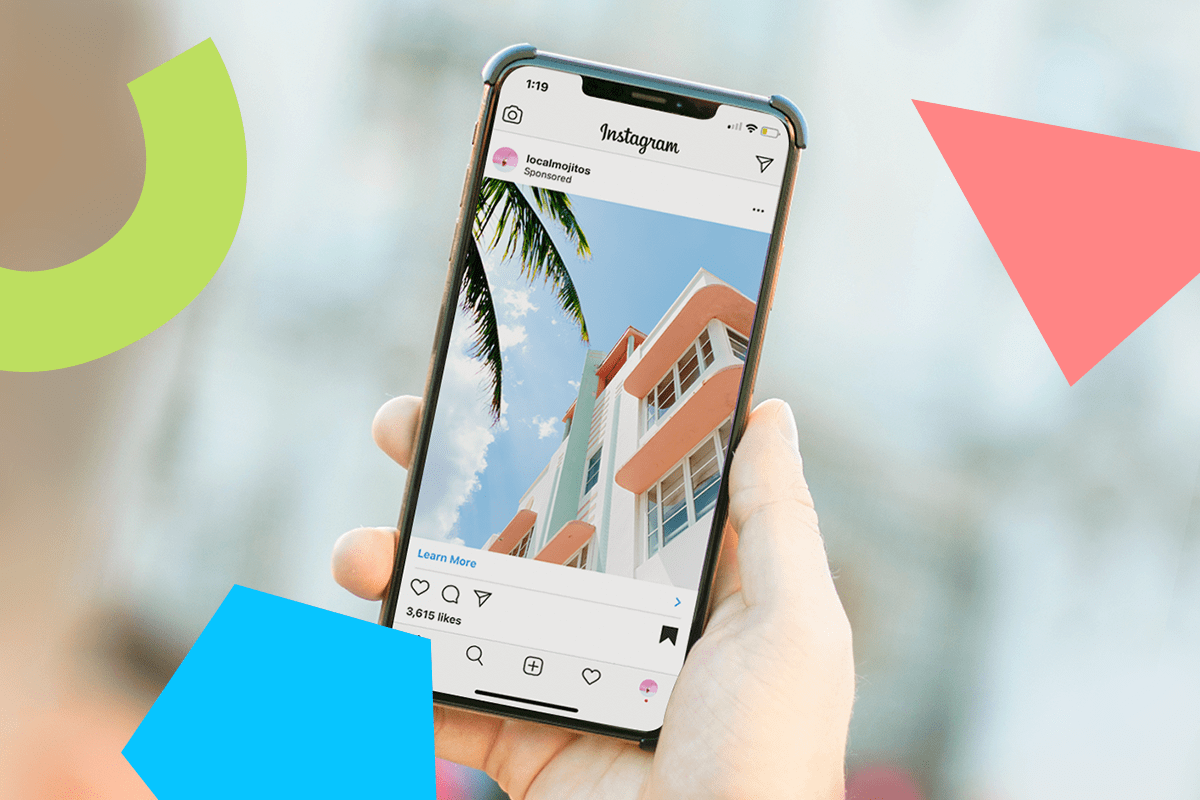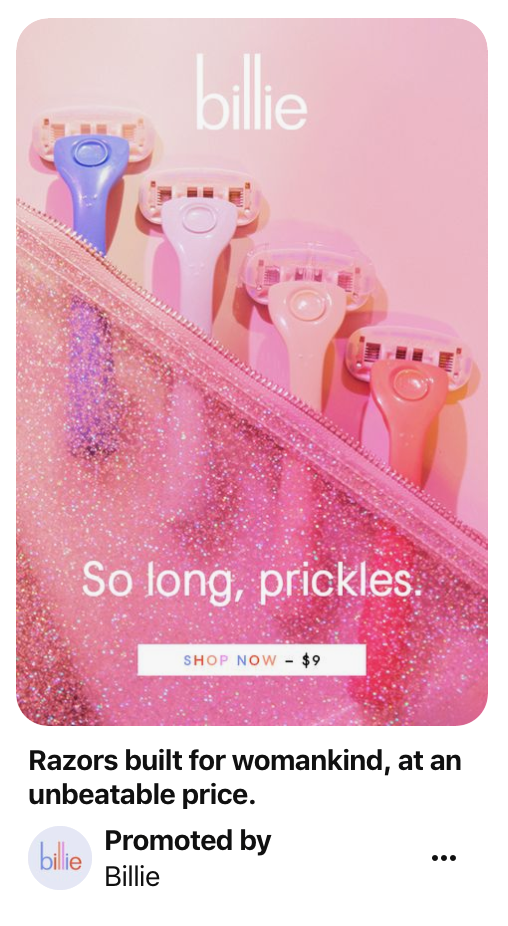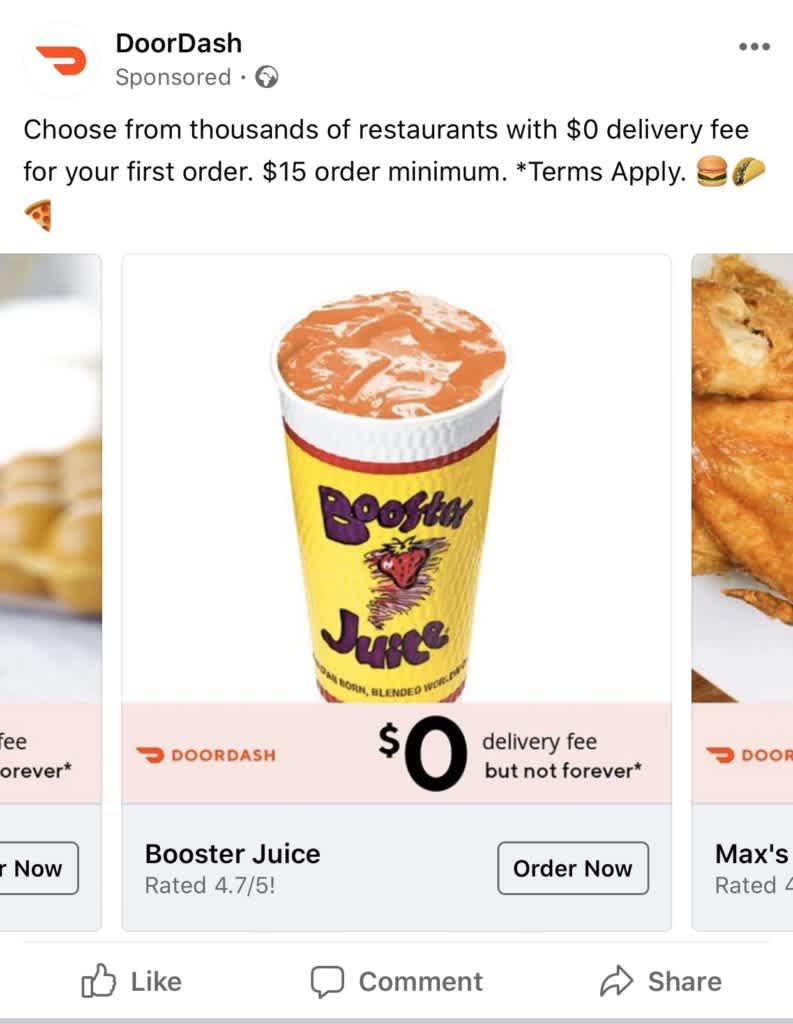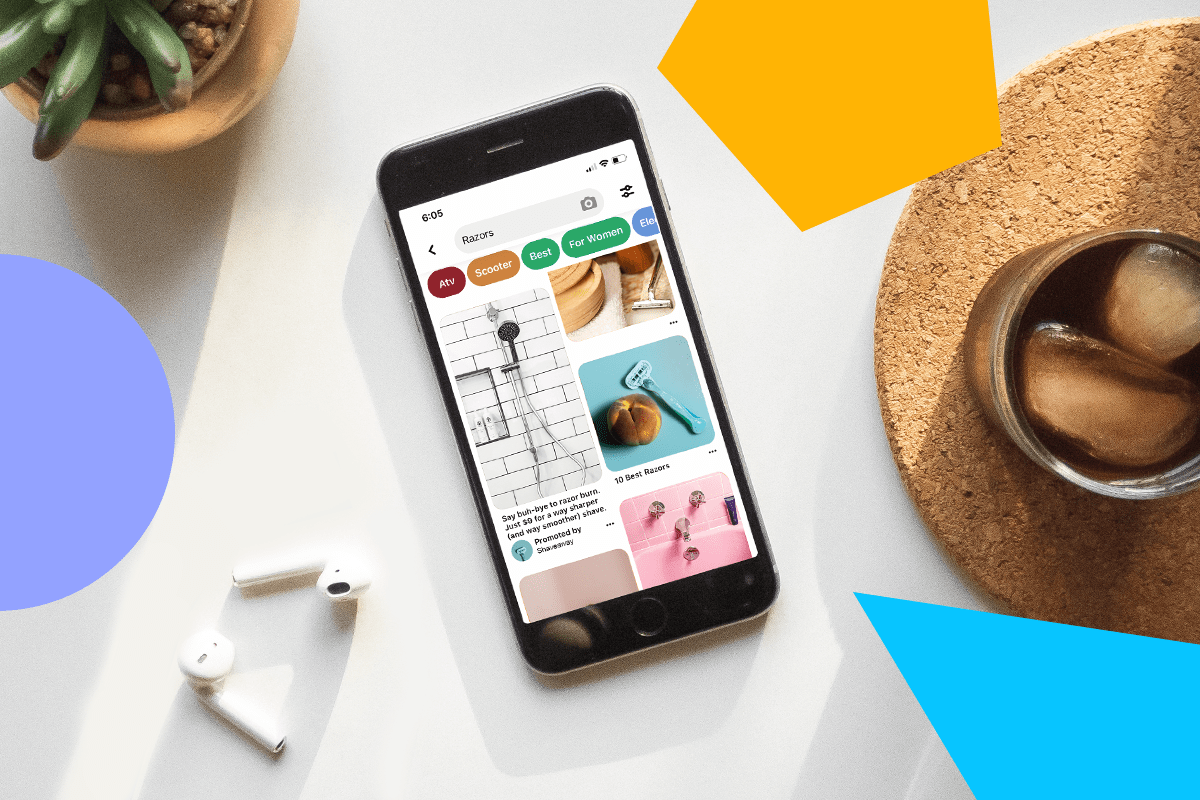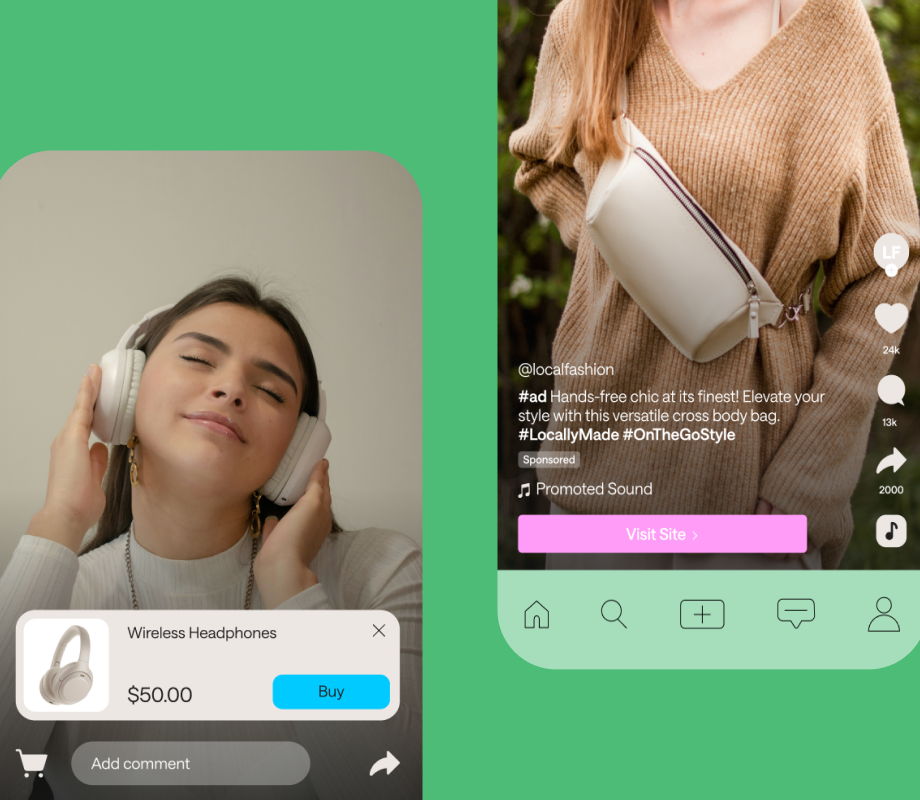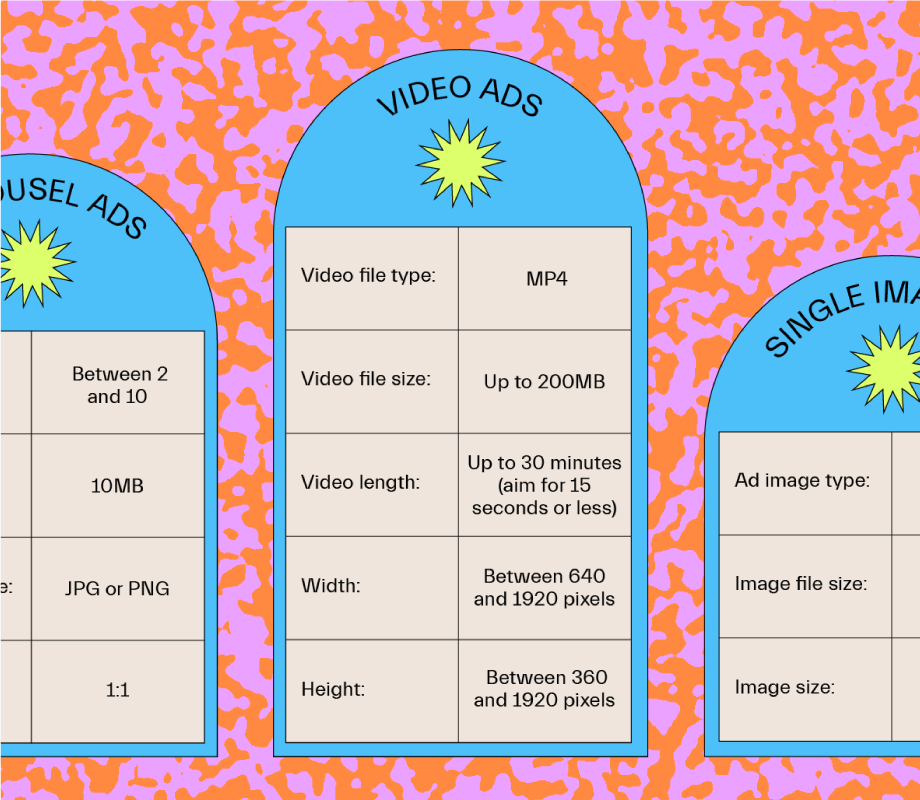If you’re looking to reach new audiences, social media advertising can be the quickest and easiest way to achieve your goal!
With the right social media ad strategy, you can build your following, get website clicks, and drive sales for your brand or business.
In our quick guide to social media advertising, we’re delving into the different types of ads you can use to grow your business, how to set clear objectives, and tips to create content that converts with your target audience!
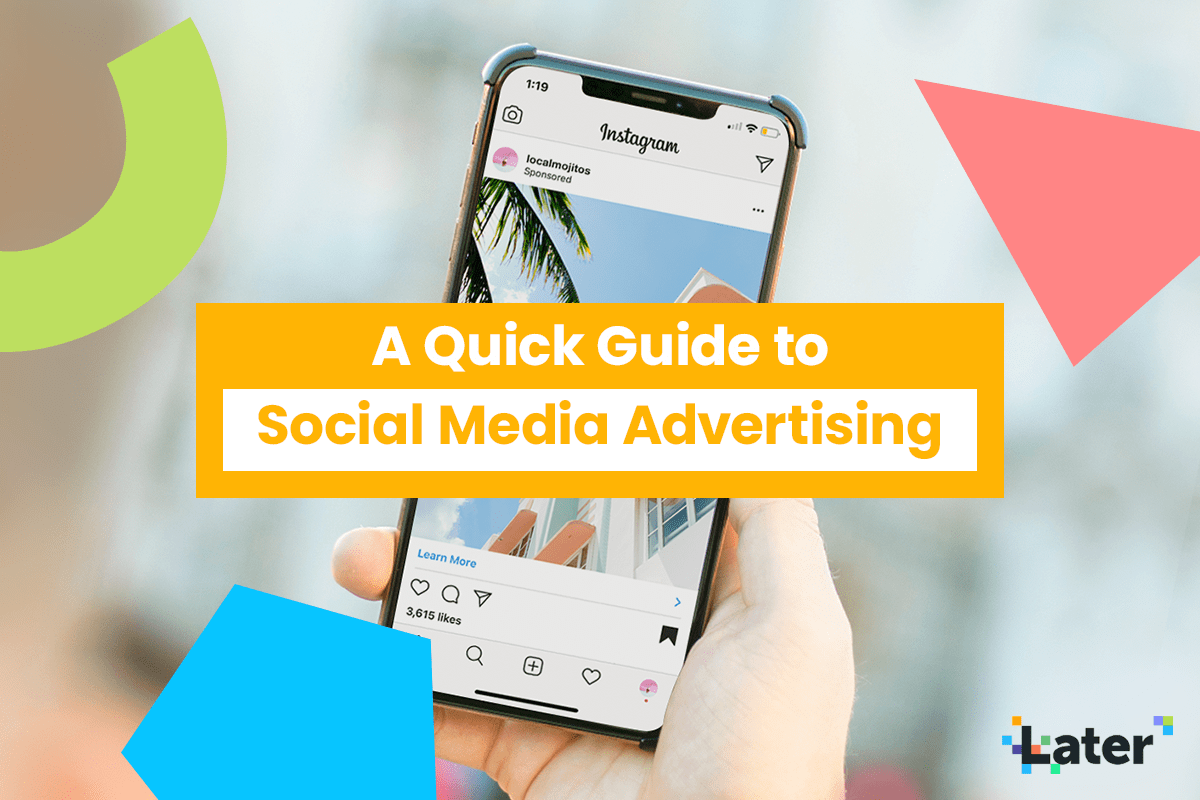
Join over 1 million marketers to get social news, trends, and tips right to your inbox!
Email AddressStep #1: Choose Your Campaign Goal
The first step to creating your social media advertising campaign — no matter the platform — is to focus on what you want to promote and why. Is your campaign sales driven? If yes, your goal would be conversions.
Or maybe you’re looking to boost your brand exposure? In this case, your goal would be to drive engagement, impressions, or followers.
On Facebook and Instagram, campaign goals include:
Brand awareness
Reach
Traffic (for clicks to your website or to the app store for your app)
App installs
Engagement (for post engagement only)
Video views
Conversions (for conversions on your website or app)
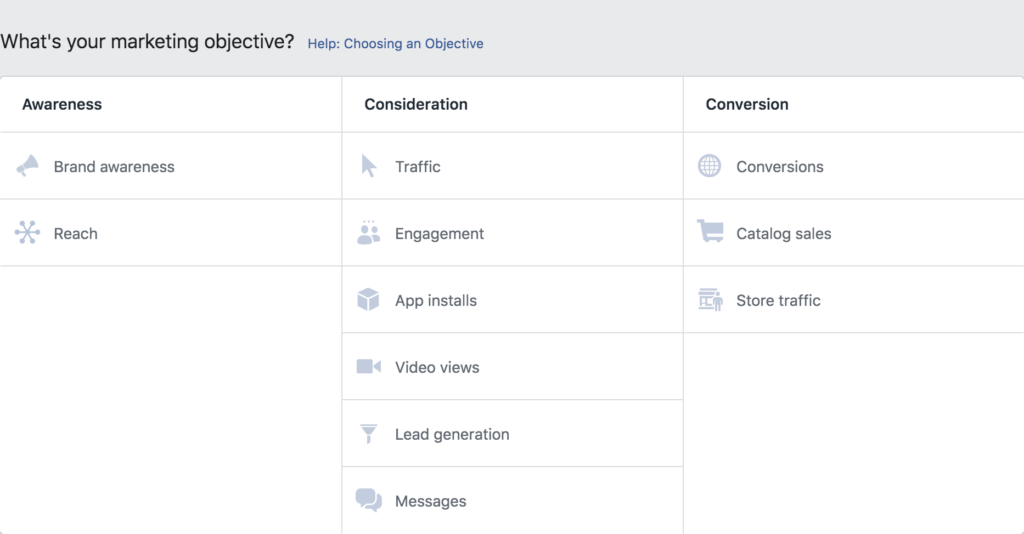
Setting your goals before you get started is the best way to keep your campaign on track, and will help you make the best decisions for your business as you complete the creative process.
Advertising on Instagram
With over 200 million monthly users, Instagram is a great place to start advertising. There’s a pretty high chance your target customers are already on there somewhere!
The great thing about Instagram ads is that you don’t have to spend a lot to be successful! It’s all about planning and being creative with your messaging, design, and placement.
Note: You’ll need an Instagram Business Profile to run Instagram ads. Learn how to set one up in our step-by-step guide.
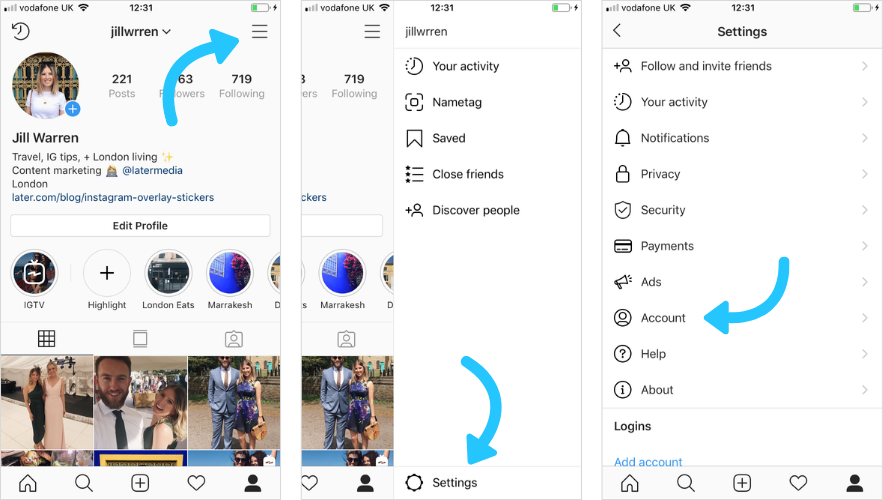
Instagram Feed Photo and Video Ads
If you’re just getting started with Instagram advertising, choosing to go with a photo or video ad is a good place to start. They look just like regular Instagram posts — flowing right into your target audience’s feed, except they say “Sponsored” in the location field.
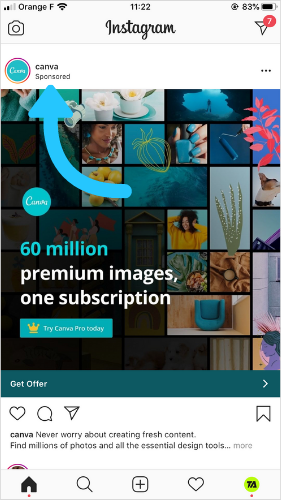
When you set up an Instagram ad of any type, you can target specific audiences to ensure that your ad is being shown to the right people. You can target audiences based on location, demographics, interests, behavior, and more.
Often, the most successful Instagram photo and video ads are eye-catching with a clear and direct message.
You can see below how ethical clothing brand, Everlane, uses clean design and a clear call-to-action to draw their audience in.
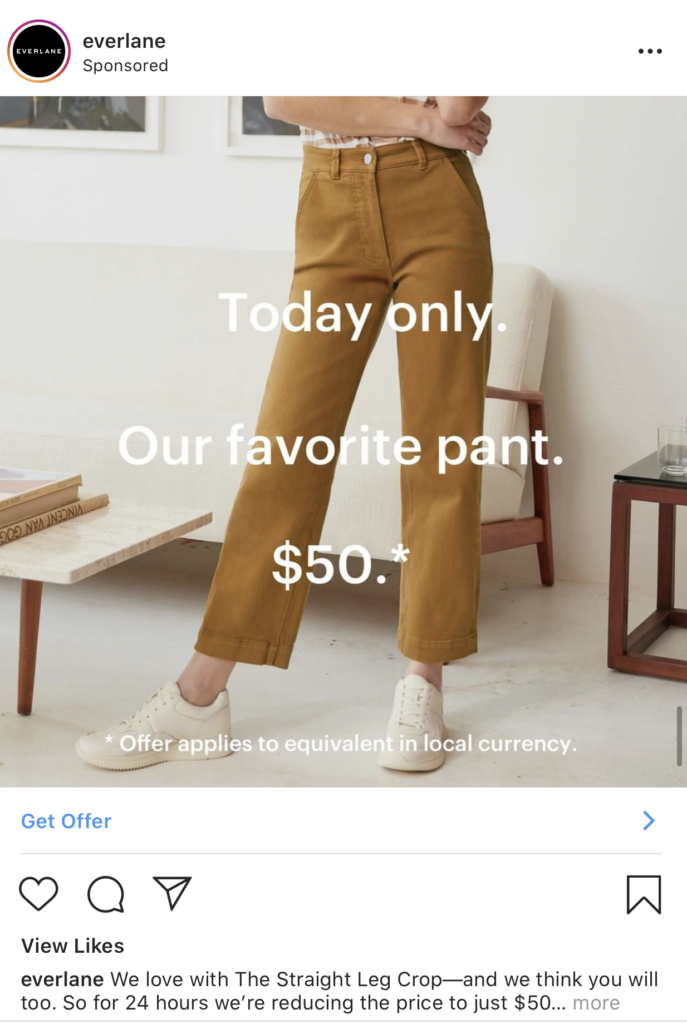
While Canadian intimates company, Knixwear use an attention-grabbing “Shop Now” video to sell their latest products.
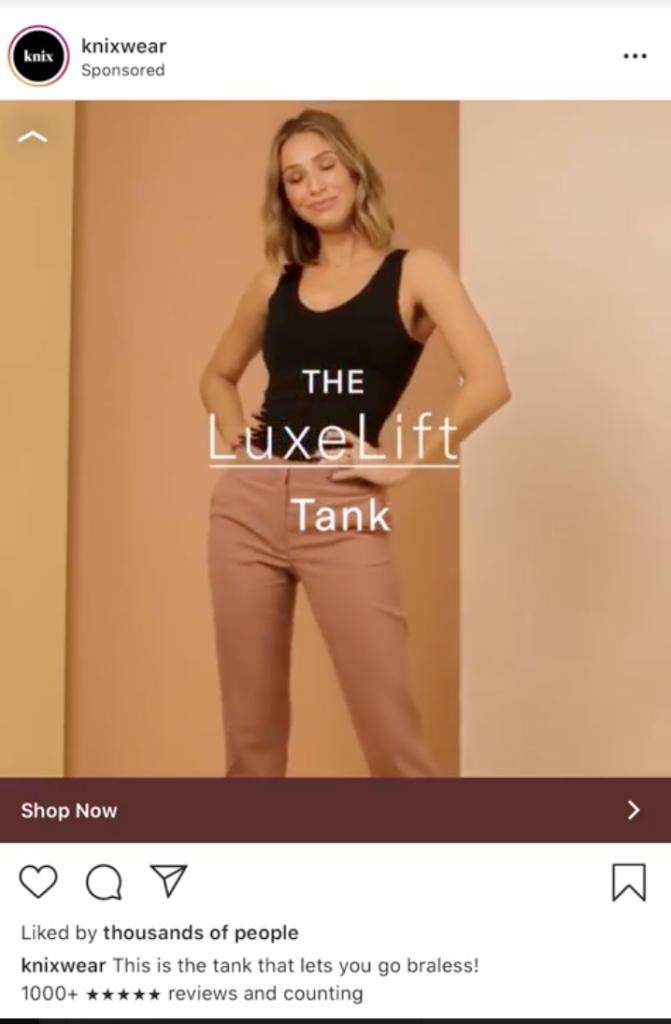
Instagram Carousel Ads
If you’re looking to showcase multiple products at once, Instagram Carousel Ads could be a great option for you.
Equally, you could also showcase one product with several different photos for a richer experience.
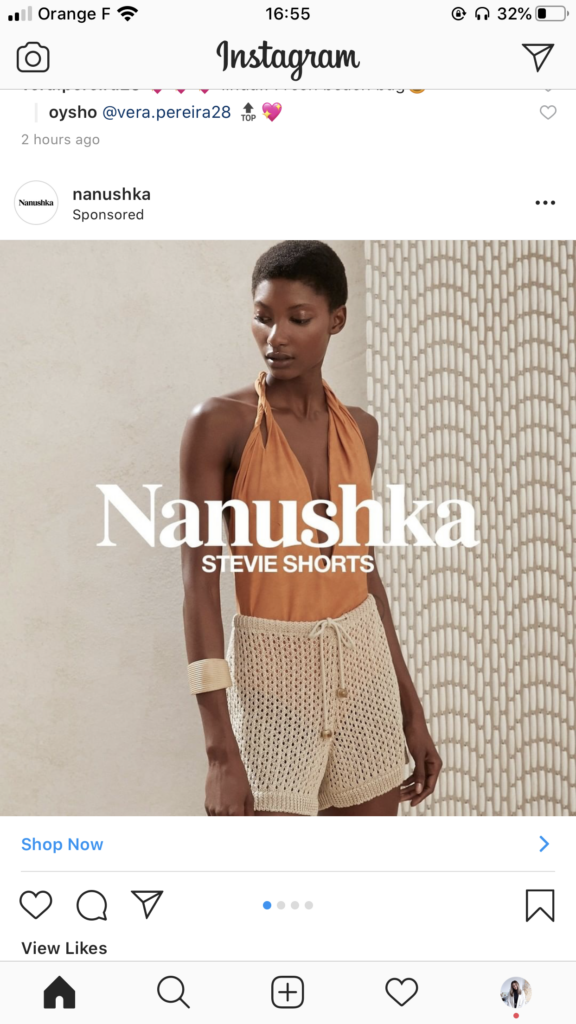
You can share up to 10 photos in an Instagram Carousel ad. And just like with photo and video ads, you can set and define and set specific target audiences.
Instagram Stories Ads
500 million people use Instagram Stories every day — so tapping into this engagement hotspot could be a great idea for your business.

If you’re not sure how to create great Instagram Stories, there are a ton of great resources to use. For example, Canva and Over both have quick and easy Instagram Stories templates that you can easily customize for your campaign.
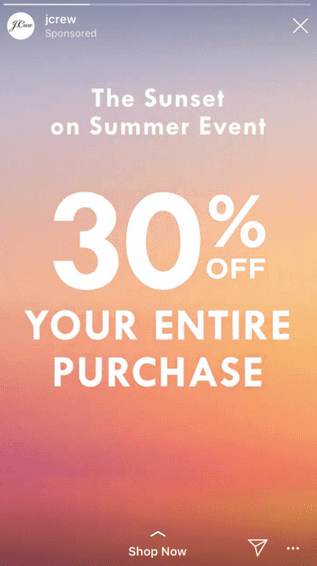
Since Instagram Stories are short in length, it’s important that you’re quick to grab attention. Think, what can you say or show right away that will make my audience stop scrolling?
And, if you have more than 10K followers, make sure your CTA is clear and direct — driving your audience to swipe up.
TIP: Use animation apps like Mojo for an extra attention-grabbing element.
Ready to start creating Instagram Stories Ads that drive sales for your business? Check out these 9 Tips for Creating Instagram Stories Ads That Convert.
Instagram Branded Content Ads
If you’re already working with creators or influencers on paid campaigns, you can turn their posts into adverts by using Instagram’s Branded Content tools.
Instagram’s Branded Content tools are a great way to clearly label your paid partnerships, and they also give you valuable insight into how your partner’s content is performing.

If a partner’s post is doing well organically, this could be a great investment opportunity for your brand.
There are 3 main steps for creating branded content ads. First, businesses need to give influencers permission to tag them in branded content posts. Then influencers need to enable their business partners to promote their post as an ad.
Once they do this, the business will be able to see the post in Ads Manager under Existing Posts and can choose to run it as a feed ad.
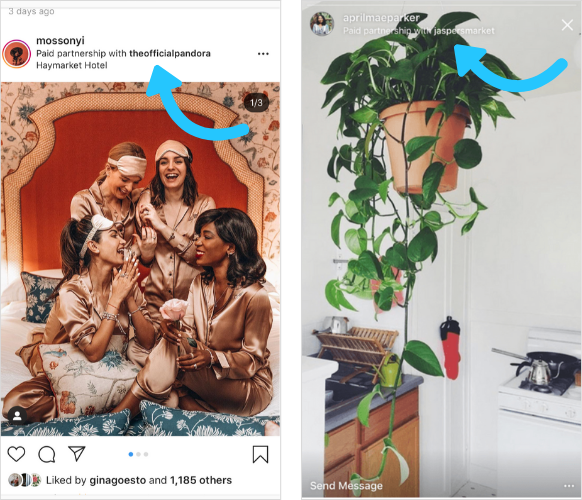
Interested in branded content ads on Instagram? We outline all the steps and more in this blog post.
Instagram Promoted Posts
If you’re looking for a quick and simple way to create an ad on Instagram, you can promote an Instagram post you’ve already shared on your feed. Either pick Instagram’s “similar audience” they pick for you or create your own.
It’s a quick three-step process. Simply select a post or story and tap promote.

From here, you can choose where you’d like the ad to direct people: your Profile, website, or direct message.
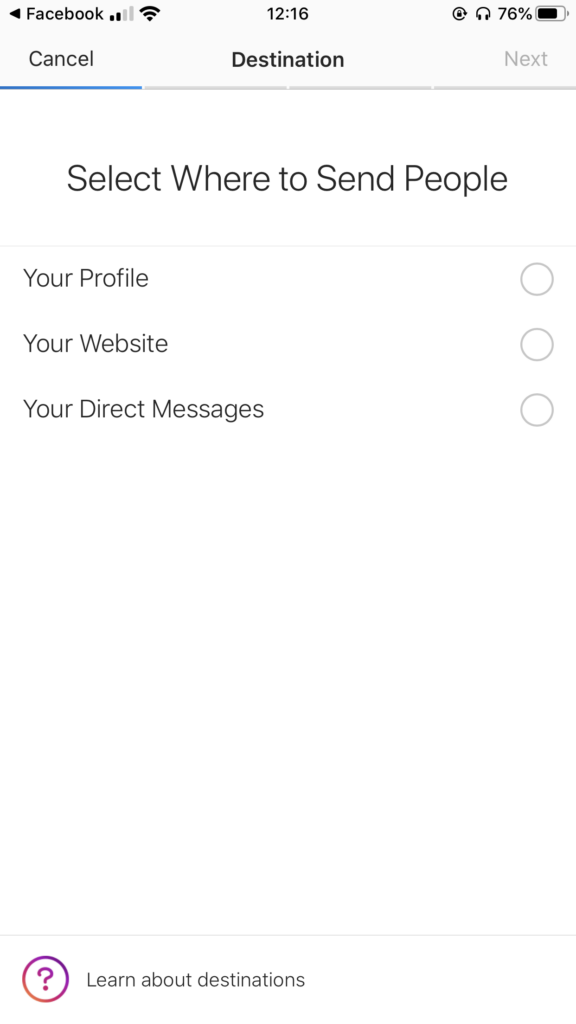
Then it��’s time to define your audience. You can pick between an automatic audience created by Instagram, creating your own, or you can choose an audience group you’ve created in the past.
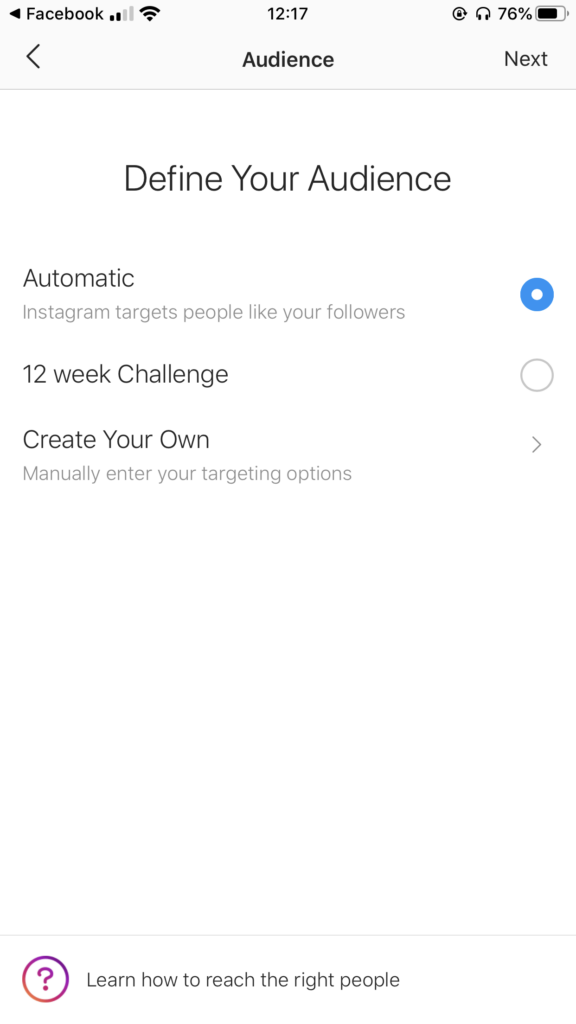
Once you’re happy with how it’s looking, pick your budget and duration, review your promotion, and press “Create Promotion”.
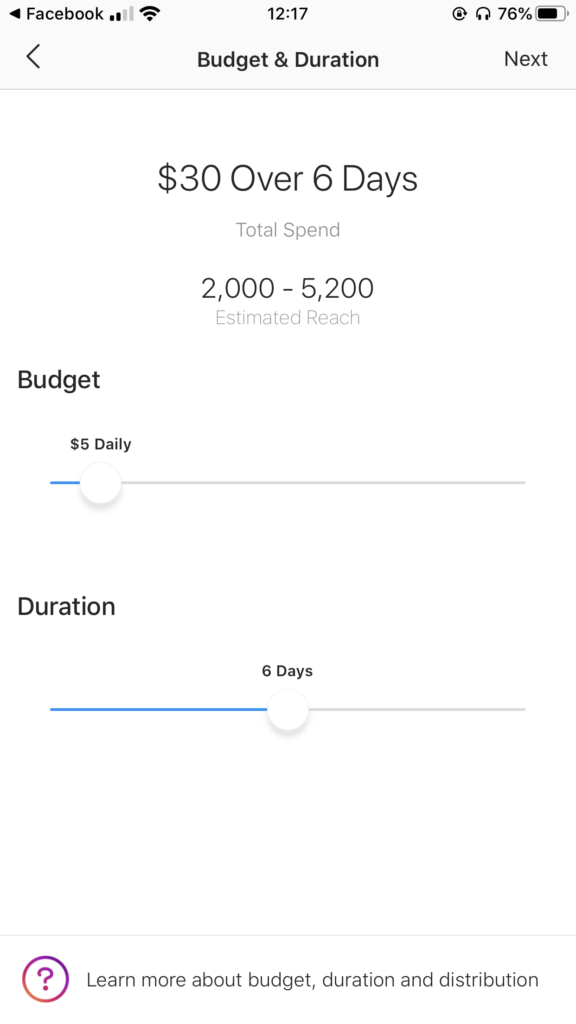
Instagram promoted posts are a quick and easy advertising option. They’re also a good choice because you can already take into account how the post resonated with your audience through insights.
Schedule on multiple platforms with Later!
Advertising on Meta (Facebook)
Meta (also known as Facebook) is a go-to advertising platform with some of the most powerful targeting tools on the market.
And with close to 2.4 billion active monthly users, Facebook is definitely still a marketing opportunity to keep top of mind.
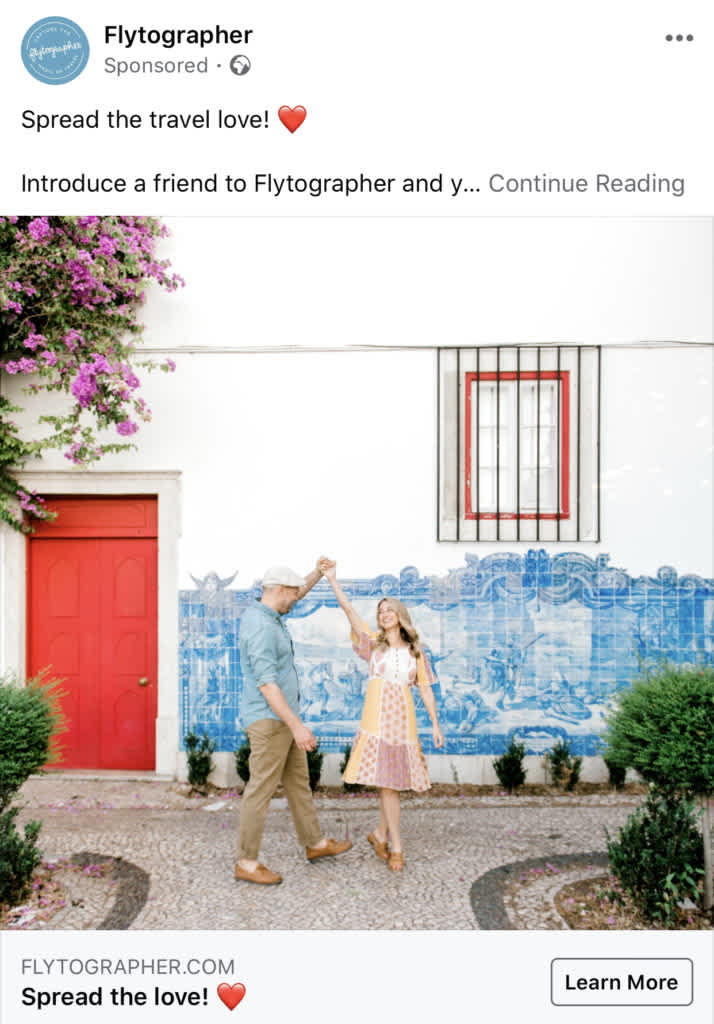
Since Meta is the parent to Instagram, there is a ton of overlap when it comes to advertising. If you have a pretty good grasp of advertising for Instagram, figuring out the ropes for Meta shouldn’t be too difficult.
To run ads on Meta you’ll need to have a Business Account on Meta. Having a business account gives you access to Meta Business Manager and Meta Ad Manager. The all-in-one tool allows you to create ads, manage them, and track how well they’re performing.

Think of Ads Manager as your friend. While it may be intimidating at first glance, it’s here where you can get down to the real nitty-gritty of your Meta ads.
Meta has 11 campaign objectives to choose from, with the most common being Brand Awareness, Traffic, and Reach.

Like Instagram, Meta has plenty of ad formats for you to choose from. You can choose from photos, videos, carousels, collections, stories, and boosted Facebook posts.
After selecting your Meta ad format, you can choose what type of Meta users you want to reach.
When you’re in the process of creating your audiences in Ads Manager, you can target based on location, demographics, interests, behavior, and more.

Be as narrow as possible when your target marketing. The more narrow the audience, the better your chance of achieving your goals. A great way to understand your target audience is by developing audience personas.
You can have fun with this. Gather information about your audience: what do they do in their free time? Where else do they shop? What are their interests?
You can find out this information by digging into your Meta and website analytics. Think of keywords about their behavior and lifestyle so you can use the specific words in your targeting.
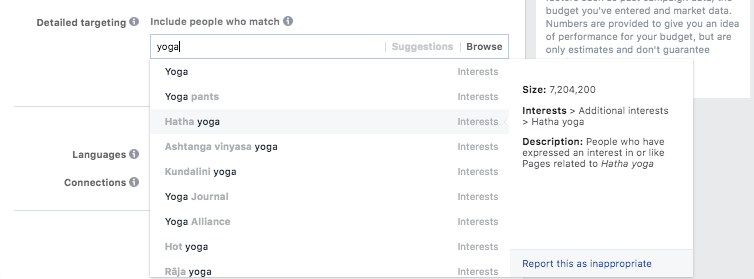
TIP: If you want to see if your ad is working for your target audience, we recommend setting up A/B with Ads Manager. It’s best to test one element at a time. For example, if you want to test your call-to-action, keep everything else the same and only change the copy.
Ready to get started? Check out this step-by-step guide on how to use Meta Ads Manager for your first campaign!.
Advertising on Pinterest
Pinterest isn’t your average social network — it’s more like a visual discovery engine.
But, with the right strategy, advertising on Pinterest could be a great choice for your business.

Since many people typically use Pinterest as a visual discovery engine, advertising on the platform is a great way to reach a large group of people who are using the platform with intent, and oftentimes, a motive to purchase.
NOTE: To start advertising on Pinterest, you’ll need a Pinterest for Business account. Don’t worry if you don’t have one already, you can just convert your existing account!
How To Create Pinterest Ads That Stand Out:
Taking into account that Pinterest is a visual search engine, it’s important to create original Pins that stand out from the crowd!
So to help you get going, here are three ways to ensure your Pins are at the very top of their game.
Pack your Caption with A Punch
Pinterest allows you to use up to 500 characters on your Promoted Pins, but Pinners will only see the first 50-60 characters on their feed. With that, make sure you’re putting the most important and catchy information first.

Keep with the Pinterest Dimensions
While Pinterest does support ads in many dimensions, they recommend your Pin to be 2:3 (1000 x 1500 pixels). This is the most mobile-friendly dimension and will make your ad stand out.
Add Clear Text Overlays to your Pins
You want your ads to be eye-catching and on-brand while flowing beautifully into the Pinners’ feed. One of the best ways to do this is by adding clear text overlays. Your text should be easy to read and appeal to your target audience. They should hint at the value your content offers, without being clickbaity or misleading.
According to a study by Pinterest, Pins with a call-to-action in a text overlay drove 6% more sales!

Now you can add text with Later’s new and improved image and text editor. Learn more about the feature in our latest update.
Setting Your Campaign Goals on Pinterest
Like Facebook and Instagram, each ad format on Pinterest is made to meet different campaign objectives. The objectives of Pinterest Advertising are:
Brand Awareness
Video Views
Traffic
App Installations
Conversions
Shopping Catalogues
Here are a few types of ads you can run on Pinterest:
#1: Promoted Photo or Video Pins
Promoted pins look just like regular pins Pinners typically see on Pinterest. They’re great for brand awareness and showcasing products and content in a simple and beautiful way.
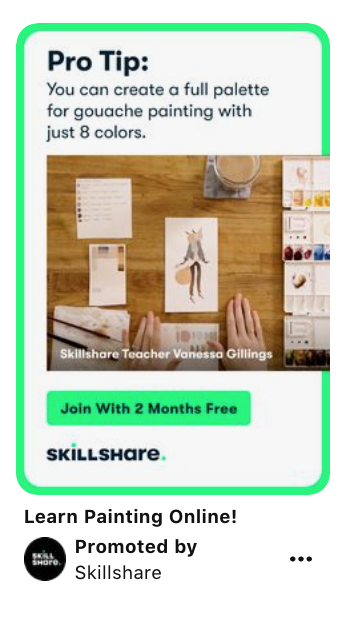
#2: Promoted Carousels
Promoted Carousels let you add up to five photos or videos in one single ad. This is great if you want to show off a new collection or a product with a few different features.
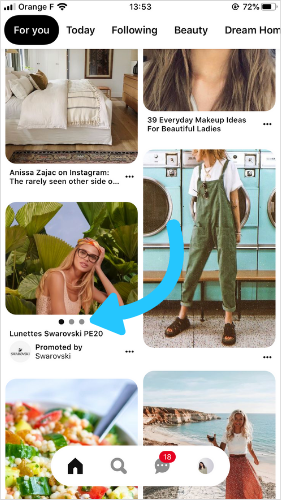
#3: Shopping Pins
Shopping pins are great for, you guessed it, shopping. For example, if you’re a clothing company, you can upload products from your catalog and turn them into Pins to reach people when they’re searching to buy.

#4: App Install Pins
App Install pins link to the Apple Store or Google Play app to generate app installs from your audience.
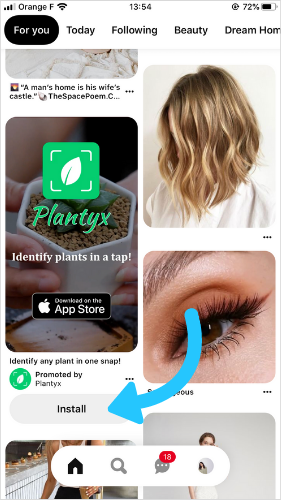
Looking for more inspiration? Check out our Ultimate Guide to Pinterest Marketing!
Advertising on X (Twitter)
Between memes and viral moments on X, you’ll also find Promoted posts, trending topics, and suggested accounts.
While X’s ad options may be more limited compared to other platforms, it can be highly effective if your audience is active there.
Like Facebook and Instagram, X offers advertising objectives such as website clicks, engagement, follower growth, brand awareness, and app installs.
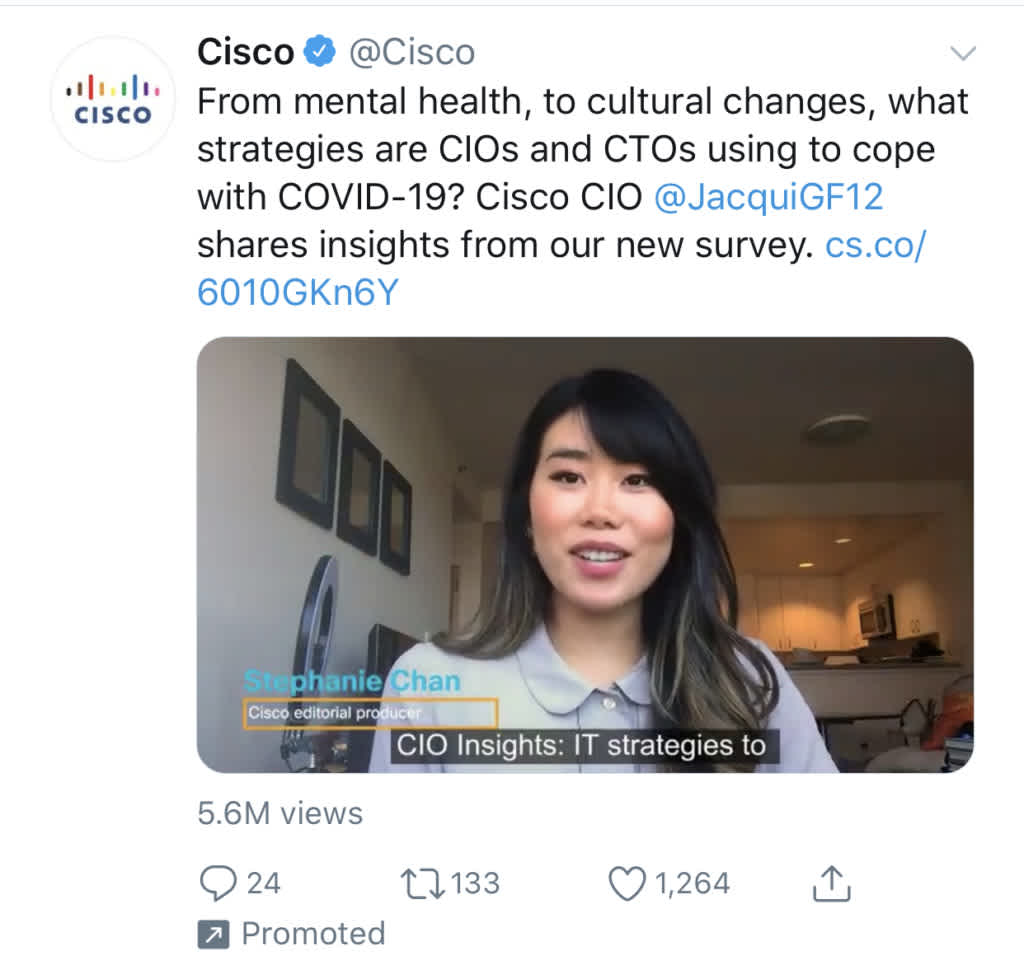
When advertising on X (formerly Twitter), you can choose from several options:
Promoted Ads: Standard posts that advertisers pay to amplify, reaching a broader audience or boosting engagement with their followers.
X Takeover: Allows your brand to dominate the conversation by placing your content at the top of the Trending Topics list, increasing visibility and engagement around specific topics or campaigns.
X's advertising platform is particularly effective for reaching audiences in real-time, making it ideal for time-sensitive promotions and events. Its targeting capabilities, including demographics, interests, and behaviors, ensure your ads reach the most relevant users.
How to Create Ads That Convert for Your Brand
Once you’ve decided which platform and ad type is best for your goal, it’s time to get to the drawing board and work on the imagery and language for your ad.
The good news is, you don’t have to be a graphic designer to create stunning graphics for your ad.
There are tons of powerful, easy-to-use, and free design apps out there for you to choose from.
For example, Canva is a great user-friendly tool that has templates not just for Instagram, but all platforms.

Along with creating a great design for your ad, writing a good caption with a strong call-to-action is the cherry on top.
When you’re starting to craft your caption, think about your audience and the platform you’re using.
Some of the most successful ads could be regular organic posts, with the brand’s authentic voice, rather than quick-win gimmicks, at the forefront of the campaign.
For example, Moonjuice does a great job of keeping their brand voice consistent between their ads and regular posts.
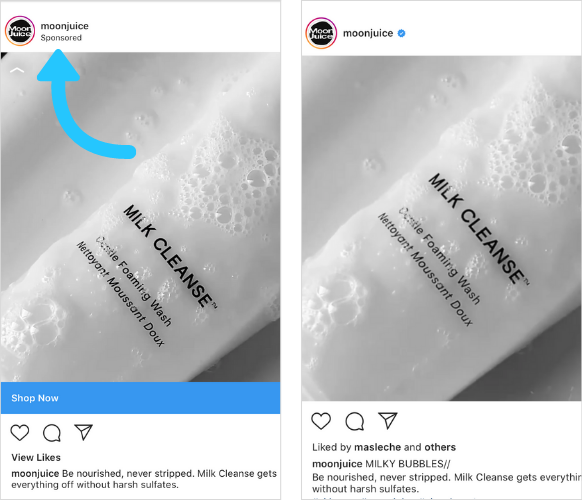
And that’s it! You should now have a much better idea of how social media advertising works across Instagram, Facebook, Pinterest, and Twitter.
You’re all set to start planning a next-level social media campaign that drives real results for your business or brand!
Ready to jump-start your social media strategy? Start planning and scheduling your Instagram, Facebook, and Twitter posts with Later. Start your free trial today.
